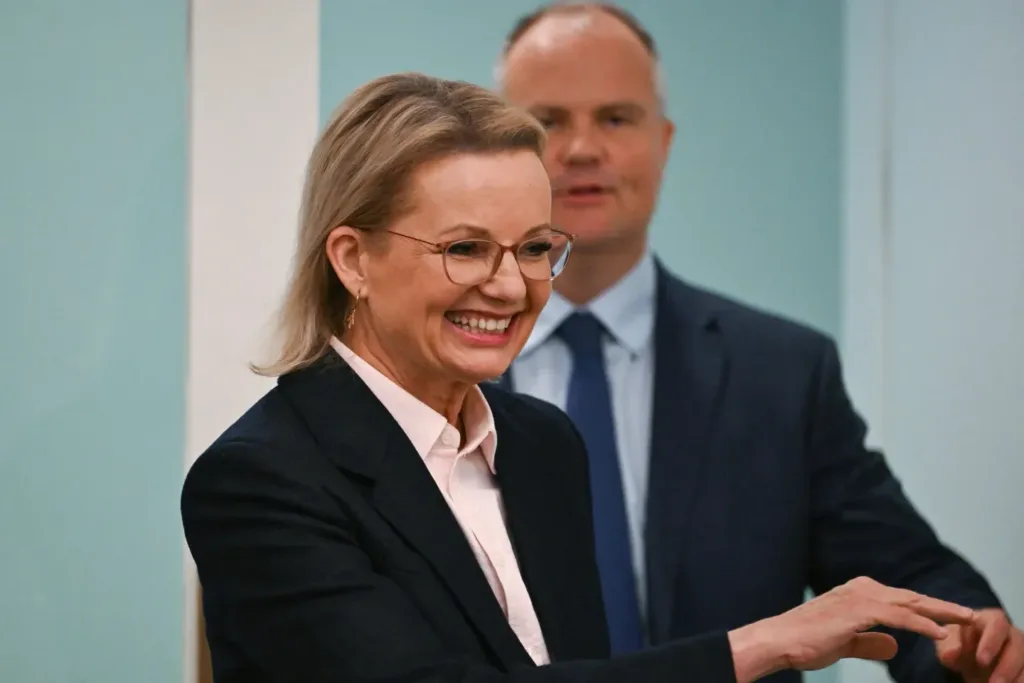In a historic moment for Australian politics, Sussan Ley has been elected as the Liberal Party leader, becoming the first woman to head the nation’s primary centre-right political force. The Sussan Ley Liberal Party leader milestone comes in the wake of the 2025 federal election, where the Coalition suffered a narrow defeat to the Labor government, prompting a leadership reshuffle within the party ranks.
Ley’s rise to the leadership role is not only a major shift in the internal dynamics of the party but also a significant development for gender representation in Australian politics. Her appointment signals a potential ideological and cultural evolution for a party often criticized for underrepresenting women in leadership positions.
A Historic First: Breaking the Liberal Party Glass Ceiling
As the first female Liberal leader, Sussan Ley’s appointment was both symbolic and strategic. Her leadership was endorsed with overwhelming support from party colleagues, who viewed her as a stabilizing figure capable of reconnecting the Liberal Party with mainstream voters following their electoral defeat.
While the Labor Party has previously had women at the helm — most notably former Prime Minister Julia Gillard — the Liberal Party had never before entrusted a woman with the top job. Ley’s appointment ends that legacy and opens a new chapter for the party’s identity.
Sussan Ley’s Political Background and Journey
Sussan Ley’s political career has been marked by resilience and a steady climb through the party ranks. Born in Nigeria to British parents, she later migrated to Australia and built an academic foundation in economics, finance, and aviation — earning her the nickname “The Flying MP” due to her past experience as a commercial pilot.
Since entering Parliament in 2001 as the Member for Farrer in New South Wales, Ley has served in several high-profile portfolios, including Health, Environment, Education, and Women. Her tenure in these ministries highlighted her policy depth, political pragmatism, and ability to navigate complex issues.
In the months leading up to the 2025 federal election, Ley played a visible role as Deputy Leader of the Liberal Party, often stepping into the spotlight on policy debates ranging from energy transition to cost-of-living pressures — key issues that defined the recent campaign.
Challenges Ahead: Rebuilding and Repositioning the Party
As the Sussan Ley Liberal Party leader, she now faces the formidable task of rejuvenating the party’s electoral appeal. In recent years, the Liberal Party has struggled to resonate with younger voters, women, and increasingly multicultural electorates. Under Ley’s leadership, the party is expected to review its policies on climate change, women’s rights, social equity, and housing affordability — areas where the Coalition has been perceived as trailing behind public sentiment.
Ley acknowledged these challenges in her first speech as leader, stating:
“We must be a party of opportunity, not just tradition. Australians are asking for a centre-right vision that is modern, inclusive, and ambitious.”
A Shift in Tone and Image
The Liberal Party’s brand has often been viewed as male-dominated and conservative. By choosing a female leader with a track record of competence, relatability, and policy experience, the party is attempting to soften its image and broaden its appeal.
The selection of Sussan Ley as the Liberal Party leader also sets the stage for more women to rise in the party’s ranks. Already, several female MPs have expressed renewed optimism that their voices will carry greater weight in the policy-making process.
Ley is also likely to play a more conciliatory role in Parliament, focusing on bridging divisions not only within her party but across the political aisle — a tone that resonates with an electorate weary of hyper-partisan politics.
Implications for the 2025–2028 Political Landscape
With Sussan Ley Liberal Party leader at the helm, the opposition is poised for a reset ahead of the next federal election cycle. Political analysts suggest her leadership could attract disillusioned centrist voters and improve the party’s performance in suburban and regional seats.
Meanwhile, Prime Minister Anthony Albanese and the Labor Party will need to contend with a more focused and potentially popular opposition leader. Ley’s ability to craft a compelling policy platform and build unity within the Liberal-National Coalition will be pivotal in determining the party’s fortunes over the next three years.
Conclusion: A New Era for the Liberal Party
Sussan Ley’s election as the Liberal Party leader represents more than just a change in personnel — it marks a cultural and strategic shift for one of Australia’s most influential political institutions. As the first woman to lead the Liberal Party, she brings a fresh perspective, a compelling personal story, and a mandate for renewal.
Whether this leadership change will translate into political success remains to be seen, but one thing is certain: Sussan Ley has already made history, and the path she now charts could redefine the future of the Australian centre-right.
